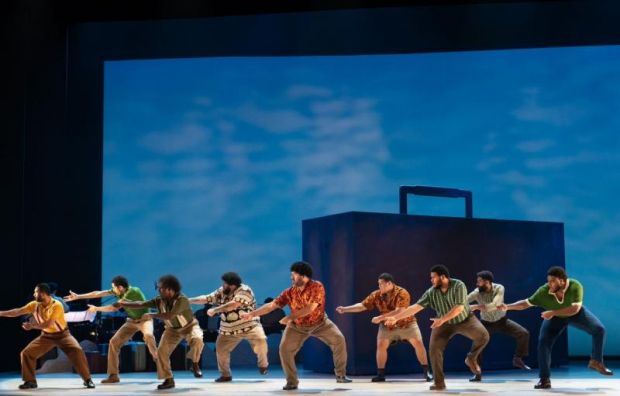Straight from the Strait
In 1968 a number of Torres Strait Islanders, working on the Mount Newman Rail Project in WA, broke a world record by laying seven kilometres of track in under 12 hours. How they did it captured the imagination of various indigenous folk, et al, in particular theatremaker and director of the show Nadine McDonald-Dowd as well as Aunty Ruth Ghee, a Meriam Mer woman and original mature-age student from the Aboriginal Centre for Performing Arts. It was the remarkable sense of community, in combination with the song and dance that form an integral part of the island's life, that provided a sense of rhythm and pace enabling them to lay the tracks at breakneck speed. This was the inspiration behind the show, more of a musical than an opera, and a fitting addition to Queensland's cultural identity. Many of the people indirectly involved with its creation include original 'village' members and the rail-workers themselves, the archives of which have been researched thoroughly and reflected through the show's presentation.

Accompanied by six instrumentalists on stage and a simple but effective adaptive large suitcase which transforms into different scenarios (designed by Kevin O'Brien), the show tells the story of two brothers, played by Paul Isakara Williams and Harold Pascoe, both well in character and identifiable, leaving their island home in search of a more fruitful material life on the mainland and the eventual path to triumph, along with all the hurdles. Told through the eyes of their younger brother as Narrator, played by Vaughan Wapau, in a most entertaining, flamboyant performance, and also the use of his local language (translated on a screen above the stage), the show additionally utilizes traditional dance and soaring harmonic song, the essence of the island's cultural identity, to tell the story. The opening ensemble is a moving stylistic example and well sets the mood. There isn't a list of the songs in the program, but two in particular are quite memorable: 'I'm Free' and also the title song 'Straight from the Strait', also suitably reprised at the end.

A few of the cast of fifteen doubled-up in certain roles, some of professional standing, in particular Marcus Corowa as Jimmy who also demonstrates moving vocals in the second act. Additionally, co-choreographers Cleopatra and Patricia Pryce well-capture the style of the island's cultural heritage and musical score.
Undoubtedly the writer and director were initially bombarded by multitudes of material and advice from many sources, of which there are many - perhaps too much - all evident in the show. Despite some infectious and amusing dialogue and well-performed stylistic song-and-dance ensembles, the flow of the show is somewhat convoluted, requiring additional workshopping and edits/rewrites in order to improve pace and timing.

However, because of the show's nature and an enthusiastic audience, there was an abundance of 'audience-participation' as such throughout and indeed a sense of harmony with those on and even off the stage; so this wasn't just another original musical but more of a cultural event, full of community craving, paving the way for further recognition of past glories and attributes of cultural significance. After all, to quote John Romeril, 'they became a small chapter in post WW2 Australian social, economic - and even 'theatrical' - history'.
Brian Adamson
Photographer: Jade Ellis
Subscribe to our E-Newsletter, buy our latest print edition or find a Performing Arts book at Book Nook.

